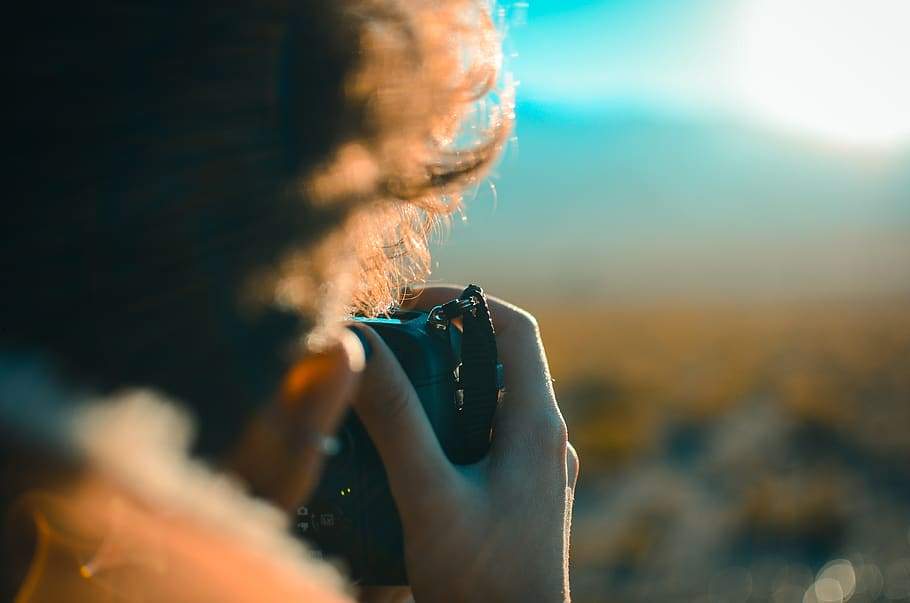If you love to travel and capture the world through your lens, then you know that travel photography is more than just taking pictures. It’s a form of art; it’s about telling a story and transporting your audience to a different place. From the bustling streets of Tokyo to the serene landscapes of Bali, there’s no limit to the beauty that can be captured through your lens. In this blog, we’ll explore the art of travel photography and the techniques that will help you create stunning images that truly capture the essence of a place.
The importance of storytelling in travel photography
Travel photography is all about capturing unique moments and telling a story from your perspective. When you look at a travel photograph, you should be able to feel the emotion and experience the place through the image. A good travel photograph should be able to make your audience imagine what it would be like to live through that experience.
To tell your story through your journey, you need to have a clear idea of what you want to convey. For this, it’s important that you understand the history, culture, and people of the place you’re photographing, as it will help you capture the essence of the place and convey it through your images. It can be as simple as a street vendor selling food on a hot summer afternoon or an old couple smiling and walking hand in hand to convey an authentic story and add depth to your photographs.
Lighting and composition
Understanding how to use lighting and composition are two of the most important aspects of travel photography, as they can make a huge difference in the quality of your images. The best time to take photographs is during the golden hour, which is the hour after sunrise and the hour before sunset. The light is soft and warm at this time of day, making for stunning photographs. If you’re taking photographs during daylight hours, try to avoid direct sunlight, which can create unflattering shadows, contrast and highlights.
Consider using the rule of thirds to compose your shots, as this is often the most popular choice among photographers. This means dividing your image into thirds both horizontally and vertically and placing your subject at the intersection of these lines for a more balanced and visually appealing image.
In addition to the rule of thirds, there are other composition techniques that can help you create stunning photographs. Leading lines, such as using a road, a fence, or a river as a background, can draw the viewer’s eye and create a sense of depth in your photograph. Framing is another composition technique that you can use, which involves using elements in the foreground to frame your subject and draw the viewer’s eye to it. For instance, you can use a tree branch, a doorway, or an archway to frame your subject and create a more dynamic composition.
Other techniques for capturing stunning travel photos
In addition to storytelling, lighting, and composition, you can also try out different angles and perspectives to create unique-looking images that stand out. Experimenting with different depths of field is another excellent technique. For example, you can blur (also known as ‘bokeh’) the background and create a more visually appealing image by using a shallow depth of field. This is particularly effective when photographing portraits or close-up shots of objects.
Most importantly, you should always be prepared for the unexpected. The best travel photographs often happen spontaneously, so be ready to capture the moment when it presents itself. This can mean having your camera ready at all times and being open to new experiences.
Capturing local culture in your travel photos
One of the best things about travelling abroad is the opportunity to immerse yourself in the local community and observe their way of life. It changes your perspective and instils a newfound respect for different cultures and customs around the world.
It’s very important that you ask for permission before photographing people or distinctive local practices, such as a religious ceremony or a community festival. This not only shows respect for the local culture but also ensures that you’re not intruding on someone’s privacy. Besides, it also shows that you’re approachable, which can lead to further conversations and even open up new experiences that wouldn’t have been possible in the first place.
For photographing local culture, try to pay attention to the small details, such as clothing, food, architecture, and even the natural landscape of the place you’re visiting. Capturing subtle details creates a more immersive and authentic travel experience for your audience.
Choosing the right camera for travel photography
There are many factors to consider when choosing a camera for travel photography, including its size, weight, image quality, versatility, and other advanced features, such as Wi-Fi connectivity.
One of the best options for travel photography is a mirrorless camera, such as the Fujifilm HX-2S. These cameras are smaller, more compact, and lighter than most digital cameras, making them easier to handle and carry around. They also offer excellent image quality and versatility, with interchangeable lenses and advanced features such as image stabilisation, greater dynamic range, and burst mode for continuous shooting.
Another option is a point-and-shoot camera, which is compact and easy to use, making it great for beginners or casual photographers. They offer decent image quality and are affordable than mirrorless digital cameras.
Final words
Travel photography is an art that requires skill, patience, and a keen eye for detail. By understanding the importance of storytelling, lighting, composition, and capturing the local culture, you can create stunning images that truly capture the essence of a place. Whether you’re using a mirrorless camera, a point-and-shoot camera, or your smartphone, the most important thing is to keep your camera handy and be open to new experiences.


No Comment